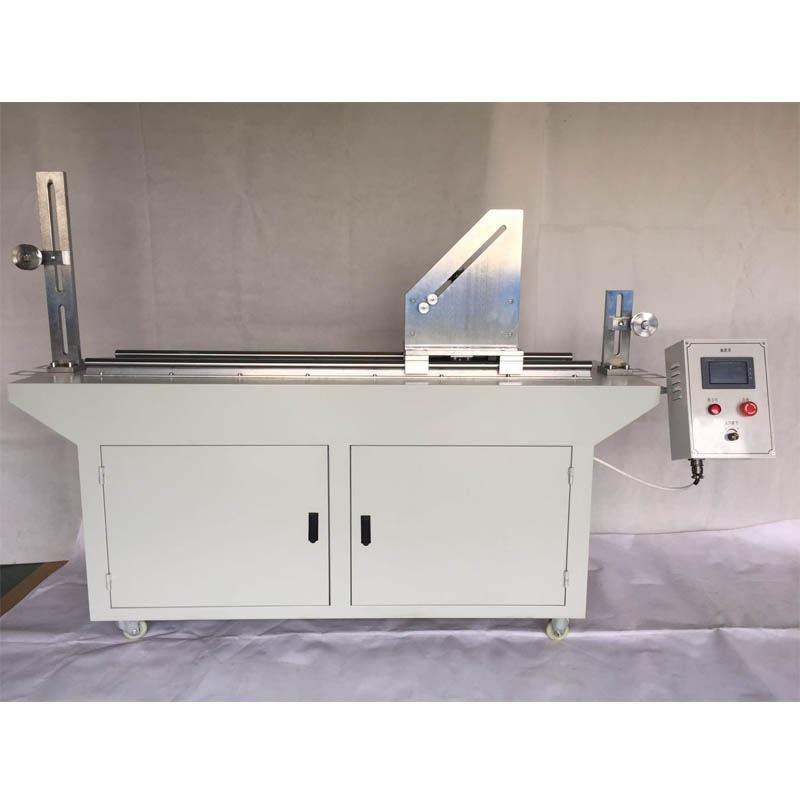Tensile Testing Equipment for Material Strength Evaluation and Quality Assurance
Understanding Tensile Testers A Crucial Tool in Material Science
Tensile testing, an essential aspect of material science and engineering, evaluates the mechanical properties of materials under tensile (stretching) forces. A tensile tester, also known as a universal testing machine (UTM), is a vital instrument used to perform this test. It helps in determining various properties of materials such as yield strength, ultimate tensile strength, elongation, and reduction of area. These properties are crucial for assessing how materials will perform under different loading conditions in real-world applications.
The Working Principle of a Tensile Tester
The tensile tester operates by applying a uniaxial tensile load to a specimen, typically a standardized sample with a specific shape and size. The specimen is positioned between two grips, which can either be mechanical or hydraulic. As the machine begins to exert force on the specimen, it measures the amount of force applied and the corresponding elongation or displacement of the material. This data is recorded in real-time, allowing for the generation of a stress-strain curve, which visually represents the material's behavior under tension.
Key Components of a Tensile Tester
A typical tensile tester consists of several integral components
1. Load Frame This is the primary structure of the tester that houses all other components. It must be robust enough to withstand high forces without deforming.
2. Crosshead This is the moving part of the machine that applies the tensile load to the specimen. It can be adjusted to accommodate specimens of different lengths.
3. Load Cell This component measures the amount of force applied to the specimen. It converts mechanical force into an electrical signal, which can be recorded and analyzed.
4. Grips The grips hold the specimen securely in place during testing. The type of grip used can vary depending on the material being tested; for example, some require serrated grips to prevent slippage.
tensile tester

Applications of Tensile Testers
Tensile testers are used in a wide array of industries, including aerospace, automotive, construction, and manufacturing. For instance, in the aerospace sector, tensile testing is crucial for evaluating components made from composite materials, ensuring they can withstand the high stresses and strains encountered during flight. Similarly, in the construction industry, tensile tests help assess the integrity of steel and concrete structures, which are essential for ensuring safety and compliance with regulations.
Moreover, tensile testing plays a significant role in quality control. Manufacturers often use tensile testers to ensure that their materials meet specified standards and performance criteria before they are used in production. This not only helps in maintaining quality but also reduces the risk of failure in the field.
Benefits of Using a Tensile Tester
The use of tensile testers provides several benefits
- Precise Measurement Tensile testers yield precise and reproducible data, allowing for accurate material characterization. - Material Comparison By testing various materials under the same conditions, engineers can easily compare their properties and make informed decisions regarding material selection. - Research and Development Tensile testing is a critical part of R&D for developing new materials, enabling scientists to understand how modifications affect mechanical properties.
Conclusion
In conclusion, tensile testers are indispensable tools in the field of material science and engineering. They not only help in understanding the mechanical properties of materials but also play a vital role in ensuring safety and reliability in various applications. As technology advances, tensile testing continues to evolve, incorporating new methods and techniques that enhance its accuracy and efficiency, thereby driving innovation across multiple industries. Whether in research labs or production facilities, the importance of tensile testers cannot be overstated, making them a cornerstone of modern material evaluation.
-
Why the Conductor Resistance Constant Temperature Measurement Machine Redefines Precision
NewsJun.20,2025
-
Reliable Testing Starts Here: Why the High Insulation Resistance Measuring Instrument Is a Must-Have
NewsJun.20,2025
-
Flexible Cable Flexing Test Equipment: The Precision Standard for Cable Durability and Performance Testing
NewsJun.20,2025
-
Digital Measurement Projector: Precision Visualization for Modern Manufacturing
NewsJun.20,2025
-
Computer Control Electronic Tensile Tester: Precision and Power for the Modern Metal Industry
NewsJun.20,2025
-
Cable Spark Tester: Your Ultimate Insulation Assurance for Wire and Cable Testing
NewsJun.20,2025
 Copyright © 2025 Hebei Fangyuan Instrument & Equipment Co.,Ltd. All Rights Reserved. Sitemap | Privacy Policy
Copyright © 2025 Hebei Fangyuan Instrument & Equipment Co.,Ltd. All Rights Reserved. Sitemap | Privacy Policy
